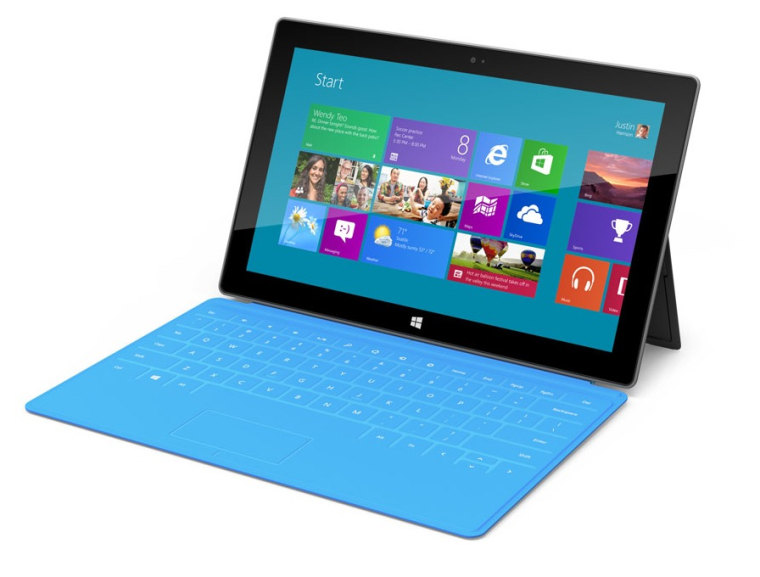
Early adopters of Microsoft's new Surface RT devices are getting an unpleasant surprise on first boot: Only half of the advertised 32GB of storage space is actually available for them to use. There's a perfectly good explanation, but it's still a potential PR problem for the fledgling platform.
Microsoft is not hiding the information; far from it, there is an official FAQ that explains how much space you have on your Surface device and why so much of it is not available for music, movies, and so on. Regardless of Microsoft's candor, however, many customers will be disappointed. Here's how the storage breaks down on the 32GB version of both the Surface and the iPad.
The solid-state disk inside a Surface RT or iPad has space for 32 gigabytes of data, but due to the difference in the way computers calculate space (in multiples of 1,024) versus how humans do (in multiples of 1,000), that 32 gigs translates to about 29.5GB. (There's even a special name for these big gigs — "gibibytes" — though few people actually call them that.)
Yes, it's confusing and a little frustrating, but at least it's the same across platforms. PCs, Macs, iPhones and Android devices all work in binary, so the drop from 32GB to 29.5GB will be the same regardless of device.
The difference is what goes onto the disk after that. iOS and Android (with basic apps like mail, calendars, and so on) both weigh in at less than two gigabytes, meaning that storage starting at 29.5GB still has around 27.5GB or so to fill up with apps and media.
Windows 8 RT and its built-in apps, on the other hand, tip the scales at a comparatively massive 8GB, more than four times the size of iOS or Android. On top of that, 5GB is reserved by the system for recovery purposes — backups of the system registry and the like. The result is that, from the 32GB advertised on the box, just 16 actual gigabytes are ready to be used for your own purposes.
Microsoft will point out, rightly, that this is because Windows is a full-on PC operating system, not a mobile one. It's ready to have accessories plugged in, printers connected, desktop-class software installed, and can do many other things that iOS and Android don't even attempt (though, as we said in our Surface RT review, this complexity to be more confusing than beneficial).
Furthermore, Surface devices have a built-in MicroSD card slot, meaning you can add up to 64GB of storage on your own, though it can be costly and SD storage is not nearly as fast as the onboard drive.
But considering that Windows RT is a somewhat limited version of the new OS and the Surface RT is intended to be a budget to mid-range device, many of Microsoft's customers may not be very happy with this trade-off.
Devin Coldewey is a contributing writer for NBC News Digital. His personal website is coldewey.cc.